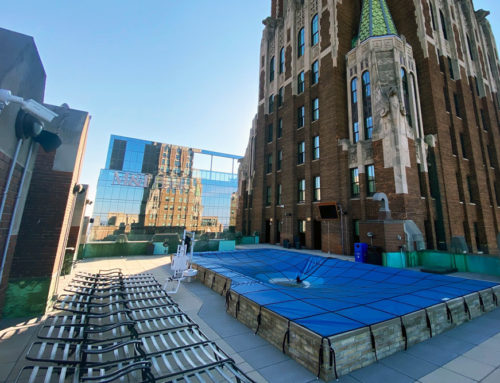On hot summer days, your swimmers may think that there’s nothing better than taking a dip in your pool or banging out some laps after work. However easy it is to think of your facility as strictly dedicated to traditional swimming activities, pool management is doing its patrons a disservice by not offering other programs to increase health and wellness.
Aquatic exercise programs are perfect ways for swimmers who aren’t able to perform high-impact activities to still get their daily recommended amount of physical exercise. If your pool attracts a large population of elderly patrons or pregnant women, consider starting up an exercise program to offer a non-traditional way to enjoy your pool.
Why aquatic exercise?
You may have seen aquatic exercise parodies on television with images of slowly moving elderly people that don’t appear to be doing much work at all, but the Aquatic Exercise Association explained that physical activity in the water has amazing benefits for the body and soul.
According to the AEA, a person submerged up to their waist feels the pull of only 50 percent of their overall weight. To the chest, that number drops to between 25 and 30 percent. All the way to the neck, though, patrons only feel 10 percent of their overall gravitational resistance.
Because water’s natural buoyant properties relieve joints from the strain of body weight, swimmers with arthritis or similar pains may be able to move more easily in the pool and perform exercises that they normally couldn’t on land.
The AEA also explained that, because water is a more efficient cooling medium than air, swimmers don’t overheat as easily when exercising in the pool. Heat stroke and related conditions can be difficult to identify and life-threatening for elderly patrons, but aquatic exercise all but eliminates that danger.
Exercises to try
Want to start an aquatic exercise program but don’t know where to start? Check out these five moves that are sure to be a hit:
The Cross-Country Ski: Recommended by FitPregnancy as a great way to strengthen arms, shoulders and hips, this move requires swimmers to pretend they’re not in the water, but somewhere in the French Alps. In a standing position, swimmers swing one leg up and the other back and to side in an imitation of cross-country skiing. Repeat this movement while swinging the arms for added resistance.
The Leg Lift: SwimmingPool.com recommended this exercise for people looking to improve mobility. While holding onto the edge of the pool, swimmer raise their right leg to the side as high as they can go. Rather than speed, patrons should focus on stretching their hip muscles to their limits – that’s the only way to get stronger.
Swimmers can also engage in low-impact activities like walking in the pool. With the increased resistance of the water, a leisurely walk becomes an opportunity to build and tone muscle and increase mobility through repeated use of joints that may be giving patrons pain. Swimmers can also try flapping their arms up and down through the water to give their shoulders and back a light workout. Squats can be another low-impact way to stretch out stiff joints and muscles while using the water’s natural buoyancy to make the movements easier on some patrons.
Pool management should also decide if they want to offer structured group lessons in aquatic exercise, or if they’d rather section off a portion of the shallow end to let interested patrons engage in low-impact activities without the pressure of an instructor of other classmates. The former will require you to hire more staff members of train lifeguards in a different skill set, while the latter may not be as entertaining for people who need more guidance when they start a new exercise routine.
Whatever setup you use, your swimmers will most likely jump on board with the opportunity to get in shape while still enjoying their daily swim. Reach out to customers and survey their opinions on and willingness to try an aquatic exercise program, and then adapt your strategies to the results. This way, you’ll be sure to have a packed house for your first class and all the others.






